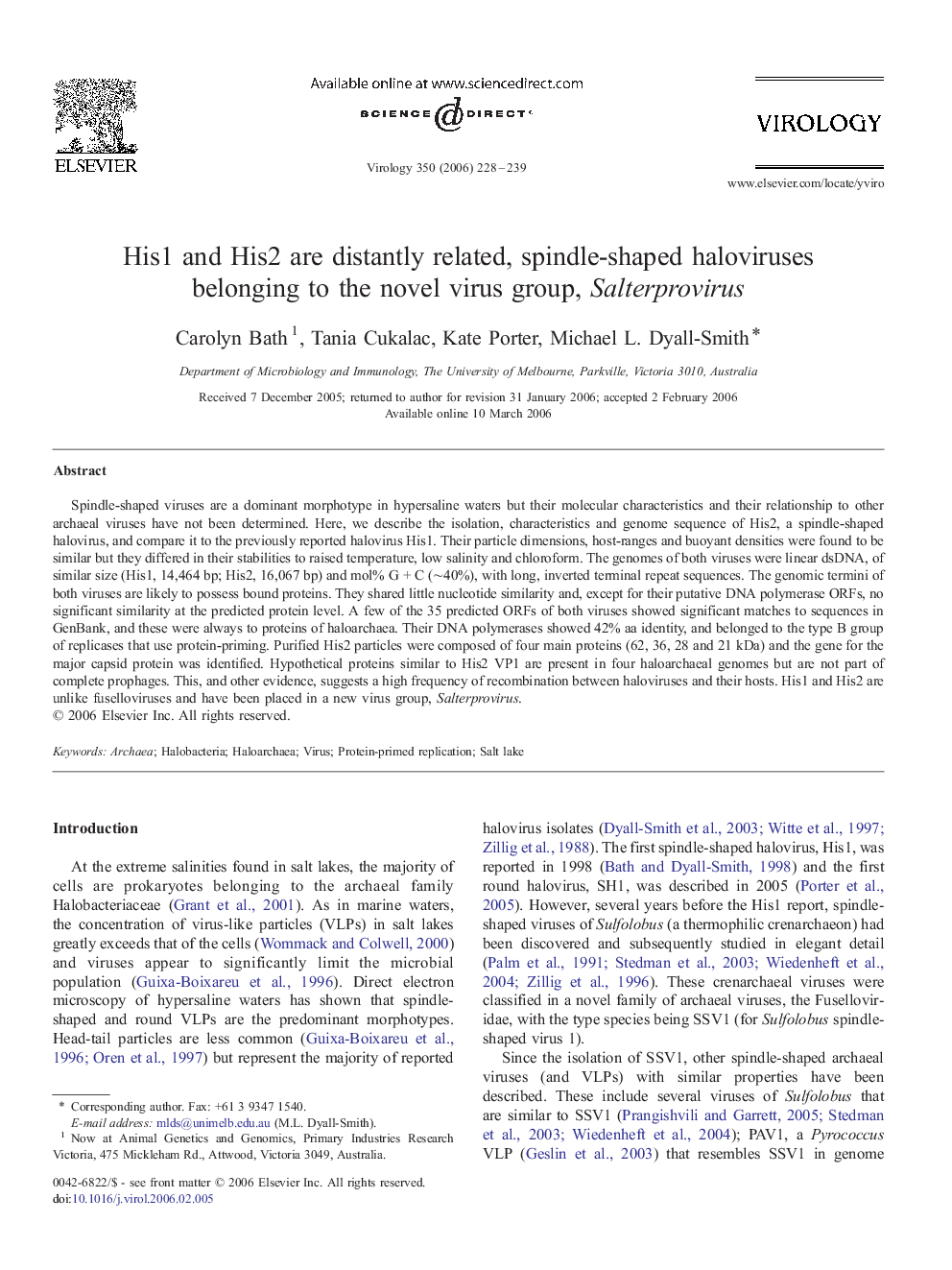| کد مقاله | کد نشریه | سال انتشار | مقاله انگلیسی | نسخه تمام متن |
|---|---|---|---|---|
| 3427597 | 1227424 | 2006 | 12 صفحه PDF | دانلود رایگان |

Spindle-shaped viruses are a dominant morphotype in hypersaline waters but their molecular characteristics and their relationship to other archaeal viruses have not been determined. Here, we describe the isolation, characteristics and genome sequence of His2, a spindle-shaped halovirus, and compare it to the previously reported halovirus His1. Their particle dimensions, host-ranges and buoyant densities were found to be similar but they differed in their stabilities to raised temperature, low salinity and chloroform. The genomes of both viruses were linear dsDNA, of similar size (His1, 14,464 bp; His2, 16,067 bp) and mol% G + C (∼40%), with long, inverted terminal repeat sequences. The genomic termini of both viruses are likely to possess bound proteins. They shared little nucleotide similarity and, except for their putative DNA polymerase ORFs, no significant similarity at the predicted protein level. A few of the 35 predicted ORFs of both viruses showed significant matches to sequences in GenBank, and these were always to proteins of haloarchaea. Their DNA polymerases showed 42% aa identity, and belonged to the type B group of replicases that use protein-priming. Purified His2 particles were composed of four main proteins (62, 36, 28 and 21 kDa) and the gene for the major capsid protein was identified. Hypothetical proteins similar to His2 VP1 are present in four haloarchaeal genomes but are not part of complete prophages. This, and other evidence, suggests a high frequency of recombination between haloviruses and their hosts. His1 and His2 are unlike fuselloviruses and have been placed in a new virus group, Salterprovirus.
Journal: Virology - Volume 350, Issue 1, 20 June 2006, Pages 228–239